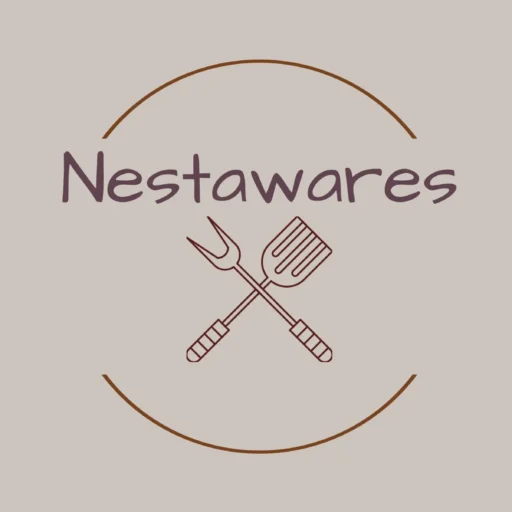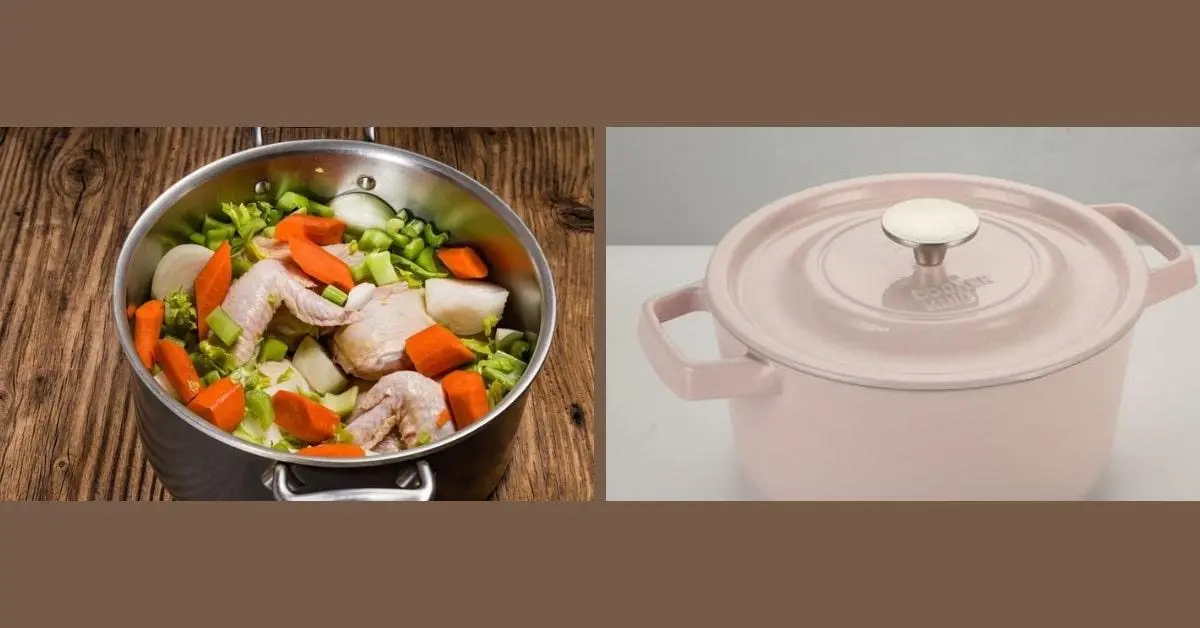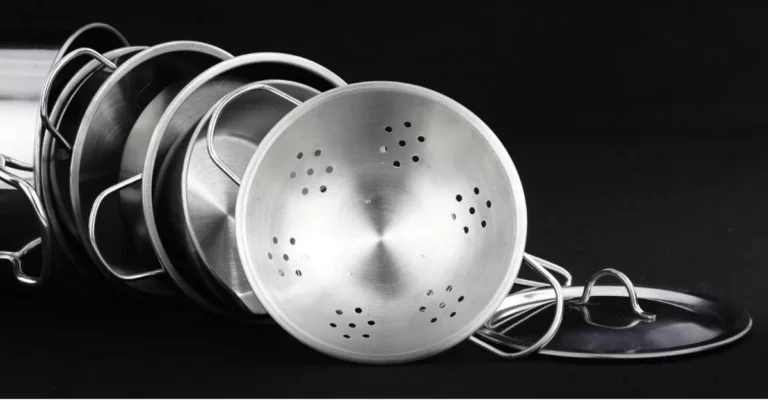Stock pots and Dutch ovens are often confused for one another, and in cases when they are not – its always a dilemma as to which one should a person buy for their kitchen.
I have attempted to resolve most, if not all, your confusions through this article. Both utensils are extremely handy for a number of recipes, and while some of their functions do overlap – they are not quite the same.
The working and design of both are different, however one needs to understand the capacities in which they differ.
Read on to know which one is more suitable for your culinary needs and whether they are worth the investment.
Table of Contents
What is a Stock Pot?
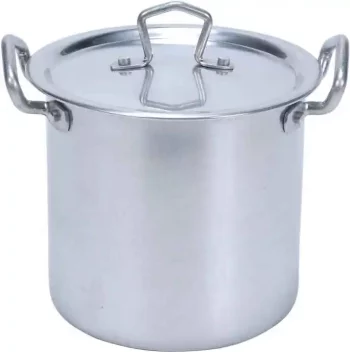
Stock pots are classic kitchen appliances that are commonly used to make stock or broth. These are wide pots having straight sides and a flat bottom that aids in simmering food for long hours.
Stock pots are mainly made from stainless steel. This helps keep the large pots lightweight. Stainless steel is also a good conductor of heat which helps in adequately distributing heat throughout the body of the pot.
The build material can also vary between aluminum, copper and enamel. There are pots in the market that come with layered bases, so as to increase the heat conductivity of the utensil.
Stock pots can be very large and you would be expected to make some space for them in your kitchen, if you are a fan of making broth. The straight sides add plenty of volume to its overall capacity.
They are usually used for cooking over stovetops for long periods. But some smaller sizes can also be put in the oven, given they are oven-safe.
What is a Dutch Oven?
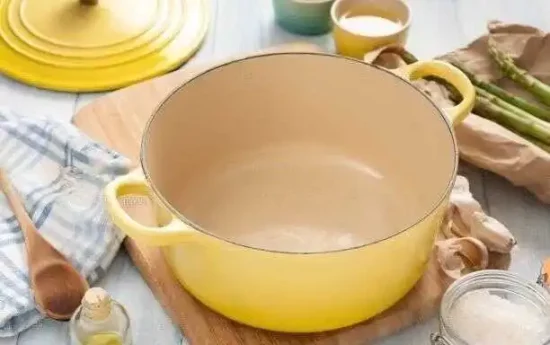
A Dutch oven is a heavy cooking pot with thick walls and a tight fitting lid. They are usually constructed from cast iron which is what makes them heavier than their peers.
Dutch ovens are generally used for slow cooking over long hours and are perfect for making dishes like stews, roasts, casseroles and even for braising. They can be used to start on stovetops before moving into the oven.
Their heavy build allows for use during camping, or barbecue parties with coals around the pot and even in high-temperature ovens.
They can be very versatile and durable pieces of cookware. They can withstand rough use over the years and yet provide optimal performance in the kitchen. And outdoors.
As mentioned previously, they are generally made from cast iron. The majority of the models available also have an enamel coating over the bakeware to make it easier to clean. Seasoning isn’t required before use, with these models.
However, the ones made from pure cast iron would need to be seasoned well to form a patina, before we can proceed with cooking.
The lids are tight-fitting to aid in keeping the moisture and heat sealed inside the pot. They have heat-resistant knobs to help with safe handling of the lids.
They also have sturdy heat-resistant handles for easy lifting and transfer of food.
Why Choose a Stock Pot - Or Not.
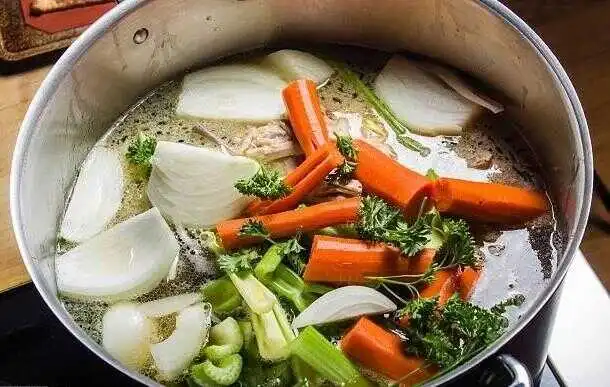
Features
- Due to its stainless steel construction, the heat conductivity is excellent. Heat gets distributed rapidly and will cook your food evenly throughout.
- They are lightweight, thus making them easy to grasp and handle in the kitchen.
- Durability is a given, since they are made to withstand heat for long hours. They can last for a long time given appropriate care is taken.
- Stockpots are easy to clean owing to their simplistic design.
- They are non-reactive to acidic foods like tomatoes and lemon, so you do not have to worry about leeching chemicals as long as they are made from pure stainless steel.
However, if you go with aluminum or copper builds make sure the cooking surface is at least lined with stainless steel to ensure non-reactivity. - Stainless steel stockpots are also corrosion resistant. Make sure to wash after every use and give enough time for air-drying to prevent oxidation, in case of aluminum and copper builds.
Drawbacks
- Stockpots are tall and wide whereas its handles are quite small as compared to the pot. This makes them quite inconvenient to lift, especially with one hand.
- Although they are quite lightweight, they can become pretty heavy with liquid or solid food in them. People with arthritis or weak wrists should keep this in mind before purchasing as using this frequently may be strenuous for the joints.
- While it is possible to use stock pots for stove-to-oven cooking, their build and dimensions make the process a bit difficult.
Why Choose a Dutch Oven - Or Not

Features
- Thick cast iron walls and tight-fitting lids are designed to lock in moisture and heat for more flavorful cooking.
- Heat conduction is amazing and has no issue being distributed evenly throughout the cooking pot.
- Most models manufactured today have colorful enamel coating over the cast iron walls to make it easier for cleaning and seasoning.
- There also exist pre-seasoned non-enameled Dutch ovens which take a step further in providing convenience while baking.
- Heat retention in Dutch ovens is top-notch and is perfect for slow simmering of soups and stews.
- Be it for baking bread or desserts, the thick gauge sides of the pot make an ideal environment for the bakeware to be put in the oven.
- Most Dutch Ovens come with a self-basting cycle that keeps the ingredients moist and tenderized as they slow-cook on the heat for long hours.
The evaporating moisture in the form of steam builds up and condenses into droplets at the sides of the pot. Which eventually trickles down onto the ingredients and keeps the food soft, moist and flavorful. Especially when you add rough cuts of meat or other proteins to your dish. - Dutch ovens come with wide loop handles which allows home cooks to be confident with their handling of the cookware. It gives a secure grasp over the utensil, thus making it a breeze while lifting or transferring.
Drawbacks
- Unlike stock pots that are made from lightweight alloys, Dutch Ovens can prove to be very heavy with their thick cast iron walls and large dimensions.
This makes it difficult for lifting it around the kitchen, especially if you are doing some stovetop-to-oven cooking. - Straining water with food already contained in the heavy bakeware becomes quite a task. One should be careful not to put much pressure on the wrists and joints while doing this. For such scenarios, you can take a look at some lighter alternatives to Le Creuset Dutch ovens here.
- Taking care of enameled cast iron bakeware pieces can be a chore, since the exterior can chip off or flake if used haphazardly.
They have some special requirements but since these cookware pieces essentially last generations, some TLC is seen as an investment at this point. - Quality Dutch ovens can be quite expensive. Enamelled ones like Le Creuset and Staub are on the pricier side but also provide excellent value.
However, there are lesser-known brands that manufacture similar products at a much lower price point. So you won’t be cramped for choices if you are not in a position to tweak your budget.
When to Use a Stock Pot over a Dutch Oven
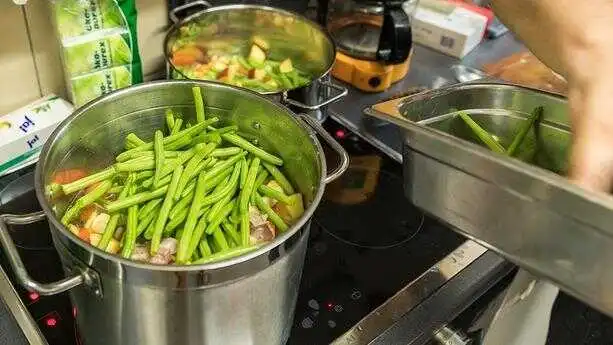
- Since a stock pot is better suited to make stocks, broths, long-simmering stews with tender flavorful meat or any other dish with concentrated flavors and aromas – that is what they should be used for.
If you frequently make soup bases and the like, you should look for a stock pot over anything else. - If majority of your Bouillon and soups are made over the stovetop only, then a stockpot is preferable. Finishing in the oven is possible, but inconvenient. So be mindful of that.
When to Use a Dutch Oven over a Stock Pot

- Not only for simmering stews and soups on stovetops, they can also be used for braising meat, making sauce and even for baking bread and other desserts in the oven.
Dutch ovens have numerous uses but when compared to a stock pot, they can certainly be used for much more than just stock. - They are ideal for the set-it-an-forget-it nature of cooking and can go long hours on the stovetop without the need for monitoring.
- Dishes can be cooked on the stovetop and finished in the oven using a Dutch oven. Owing to its convenient design and dimensions, it becomes easier to transfer the pot between different cooking modes.
What to Cook with Each
Stock Pots
Liquid content in a stock pot tends to evaporate more slowly, thus aiding in a smooth slow-cooking process. Therefore, long-simmering mixtures like soups, stocks and broths are best suitable for cooking in a stock pot.
A stock pot is also great for boiling ingredients like potatoes and pasta. Easier to make mashed potatoes for Thanksgiving with this cookware, and especially in big batches.
You can also make a large amount of sauce and store it for future use.
Blanching and steaming of vegetables is also something stock pots are used for. And of course, if you are looking to flaunt your classic chili recipe at a family gathering – a stock pot has you covered.
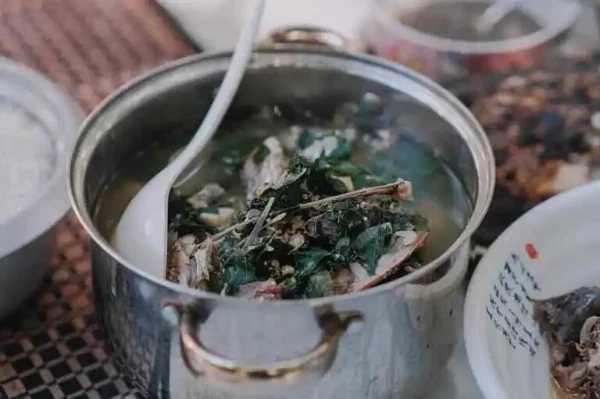
Dutch Ovens
Tough cuts of meat are always perfect for cooking in a Dutch oven. These turn out to be the most succulent and flavorful pieces when cooked long and slow in a Dutch oven.
Pork shoulders and beef briskets for starters, while you can explore other recipes like a good old creamy mac and cheese.
Or a hearty hot pot, with braised meat and baked veggies. And maybe bake some bread or crispy doughnuts for dessert.
You should be careful with acidic foods that include citrus as they may react with the build. And anything that sticks to the surface like eggs or flaky fish should be cooked after a thorough seasoning session with your cast iron.
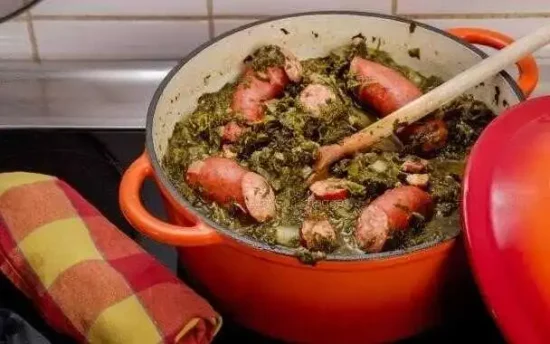
Best Brands to Pick From

All-Clad, Cuisinart, Calphalon and Tramontina have some of the best stockpot models out there. Made from good quality stainless steel and also non-stick surfaces if that’s what you prefer – these brands have established a name for themselves giving customers the very best.
So you would not have to worry if your choices boil down to these names.
Le Creuset and Staub for the highest quality French-made enamelled cast iron Dutch oven. Lodge if you prefer bare cast iron instead.
There are affordable options in the market sold by Cuisinart, Great Jones, Misen and Denby too, if spending more than $300 on a pot isn’t something you have in mind.
Which option is best for you?
Honestly, the answer to this question depends on what your purpose is.
If you need something to use for making stock, and that is something you make often – then a stockpot is the way to go. Its also good for slow-cooking and other kinds of recipes.
Here’s a buying guide for you, in case you want to learn about purchasing the right stock-pots in depth.
Same with a Dutch oven. There are recipes that require the use of a thick-walled pot for the perfect braise or roast and nothing else can do it better than a Dutch.
However, you can always go for both if you can’t pick one and if your budget allows it. We keep adding to our kitchenware collection all our lives, so there’s no need to pick one to get your kitchen tasks done.
Making stock, broth or stew in a Dutch is a pain and I would rather use a stockpot for that. But since Dutch ovens are multi-functional and more versatile than stockpots, I would lean towards purchasing one of those simply to be able to explore more recipes.
Again, the answer lies with your needs, purpose and budget but I hope I have been able to be of some help in narrowing that choice down.
